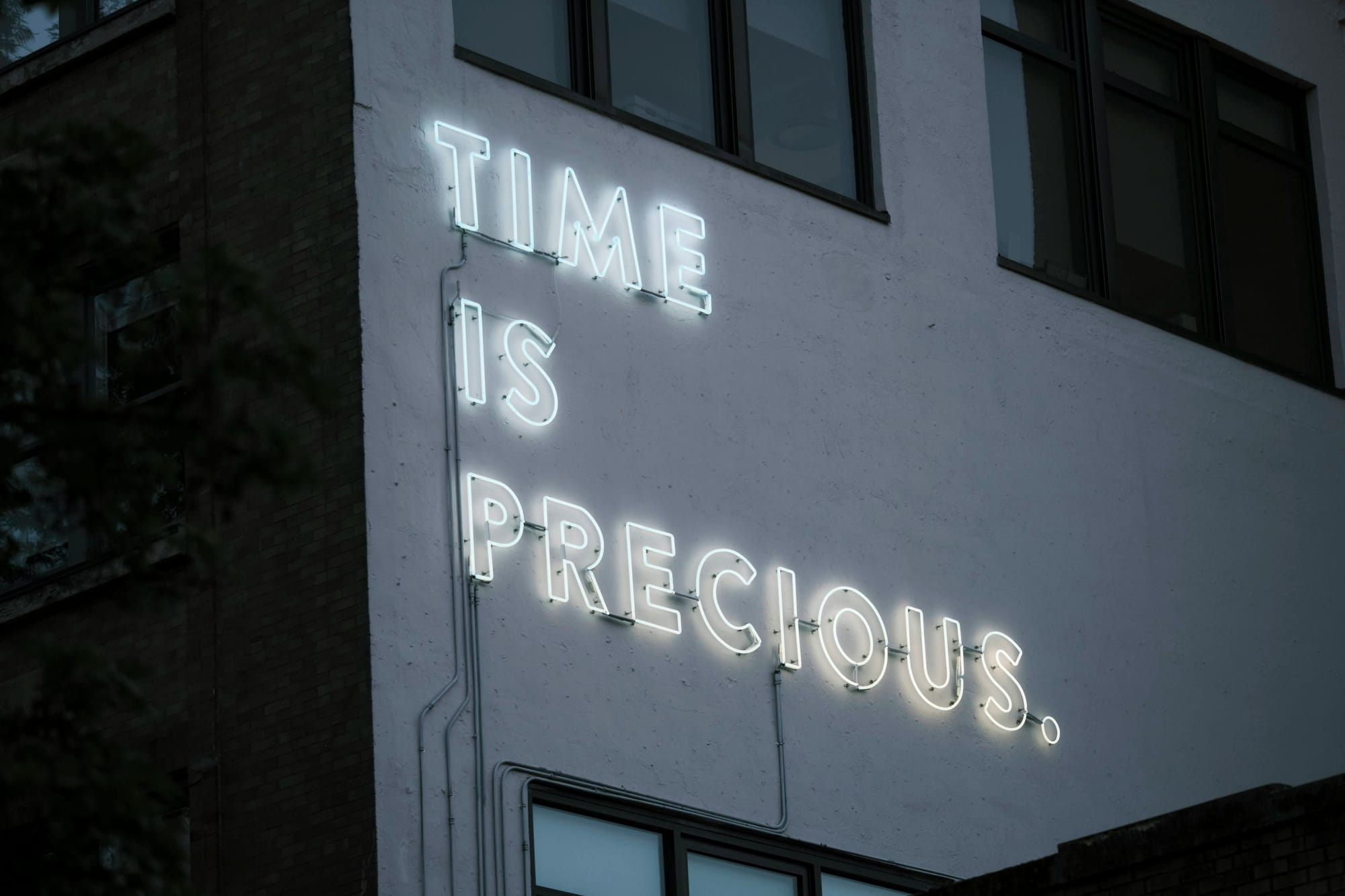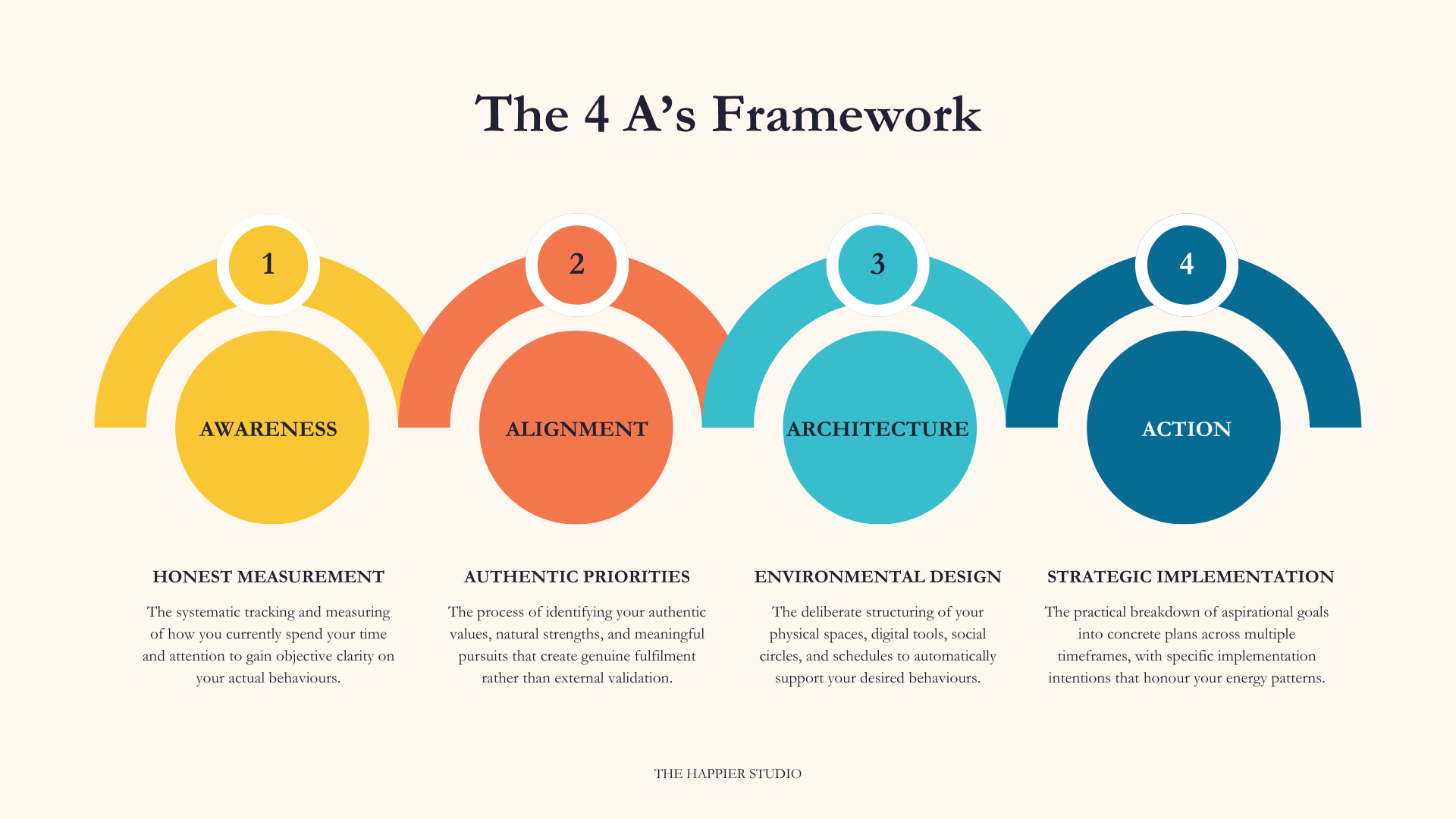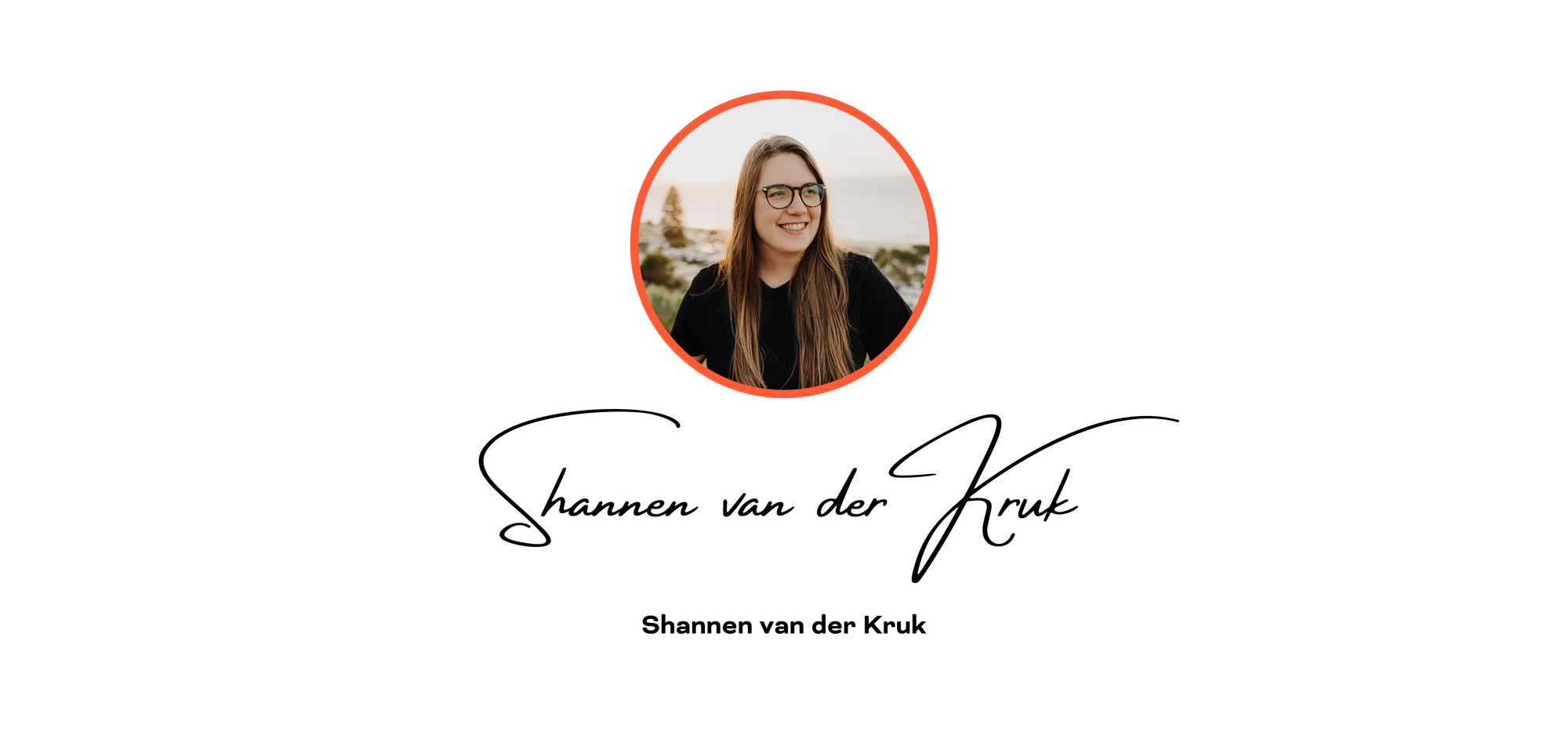April 27, 2025 | #37 | read on The Happier Studio | Free Version
Welcome to The Happier Newsletter, a weekly newsletter where I provide actionable ideas to help you build a happier, healthier, and more meaningful life.
What’s On Today
- The 4 A's Framework
- The Minimum Effective Dose
- The One-Day Time Audit
The 4 A's Framework

The average human will spend a full decade of their life on autopilot.
Think about that for a second.
10 years. Gone. Not living, just existing.
This statistic from NatWest's survey blows my mind because I lived exactly this way for years, following society's default path without questioning it. Wake up, commute, work, Netflix, repeat.
Until I realised: It's not a time management problem. It's a life architecture problem.
The breakthrough framework I'm about to share isn't just another productivity hack. It's a complete system for redesigning your relationship with time, energy, and purpose, what I call the 4 A's Framework.
Let's break it down:
The First A: AWARENESS

You cannot change what you do not measure.
This simple truth forms the foundation of all meaningful transformation. Before designing an intentional life, you must first understand where your time and attention are actually going.
Most people have only vague notions of how they spend their time. When operating on autopilot, we're primarily using primitive brain pathways built around habit, our neurological wiring favours unconscious patterns over conscious choices.
Research from Harvard Business School reveals the stark reality: knowledge workers consistently overestimate their productive time by nearly 30% and underestimate time spent on distractions by up to 40%. Our perception rarely matches reality.
But you can change this. By simply observing your patterns without trying to change them yet, you strengthen the prefrontal cortex and neural networks needed for true transformation. Studies show that participants who monitor their behaviour for just one week demonstrate measurable increases in intentionality, even without specific change goals.
The most powerful tool for this awareness? A time audit. When you track each hour honestly for 7 days (or even just one day), the results are often shocking, revealing hours lost to social media, streaming services, and unproductive meetings while you claim to "not have time" for what truly matters: health, relationships, learning, or creative pursuits.
So, by just measuring how you spend your time, you automatically become more intentional with it.
The Second A: ALIGNMENT
Once you understand where your time is going, the next question is: Where should it go?
This is where most people get stuck, asking paralysing questions like "What should I do with my life?"
Instead, try asking more empowering questions:
- "What activities make me lose track of time?"
- "What am I willing to struggle for?"
- "What would I do if money and others' opinions weren't factors?"
Research shows that pursuing goals aligned with your authentic values creates 3x more satisfaction than chasing external validation.
The Ikigai framework provides a powerful lens for finding your sweet spot, where what you love, what you're good at, what the world needs, and what you can be paid for all intersect.
The insights that emerge from this process aren't always what you expect. Many people discover their supposed dream career is actually someone else's dream for them. This realisation alone can free you to explore paths that genuinely energise you.
The Third A: ARCHITECTURE
Here's where traditional personal development gets it completely wrong. Most advice centres on willpower and motivation, trying to force yourself to change through sheer determination.
But willpower is a finite resource that depletes rapidly.
The reality is that your environment shapes your behaviour far more than motivation ever will. Research in behavioural psychology shows that we can significantly increase our chances of success by designing our environments to make desired behaviours easier and undesired behaviours harder.
Consider these examples of environmental design:
- Want to read more? Keep books visible and your phone in another room.
- Need to focus? Use app blockers during designated deep work hours.
- Starting a morning routine? Set workout clothes next to your bed.
Your environment isn't just your physical space, it's your digital landscape, your social circle, and your schedule structure. Each can be intentionally designed to support your authentic priorities.
The Fourth A: ACTION
Big dreams without actionable steps remain fantasies.
This is where we bridge the gap between your inspiring visions for the future and the concrete actions you can take today.
The most effective approach is to reverse-engineer your vision through multiple timeframes:
- 5-year outcomes
- 1-year milestones
- 90-day projects
- Weekly priorities
- Daily actions
Research on implementation intentions shows that creating specific if-then plans ("If it's Tuesday at 10 AM, then I'll work on my book for 90 minutes") dramatically increases follow-through compared to simple goal intentions.
Bonus: The magic happens when you optimise not just time, but the entire Time-Energy-Attention Triangle. Most people focus only on time while ignoring when their energy and attention naturally peak. By matching your most important work to your highest energy periods, you can significantly increase your productivity.
The Minimum Effective Dose
You don't need to overhaul your entire life at once. In fact, trying to change everything simultaneously is a recipe for failure.
Instead, apply the minimum effective dose of the 4 A's Framework:
- Track your time for just one day (Awareness)
- List three activities that genuinely energise you (Alignment)
- Make one environmental change to support a desired behaviour (Architecture)
- Schedule one high-leverage action aligned with your values (Action)
That's it. Start small to go big.
Remember, your life is too precious to live on autopilot. We all have the same 24 hours, but how we design those hours makes all the difference.
You are the architect of your life.
Design it intentionally.
The One-Day Time Audit
Complete the One-Day Time Audit. Track how you spend tomorrow in 30-minute increments, noting:
- The specific activity
- Your energy level (High, Medium, Low)
- Your focus level (Concentrated, Scattered, Autopilot)
- Whether it moved you toward your goals or values
More details next week. Stay tuned!
